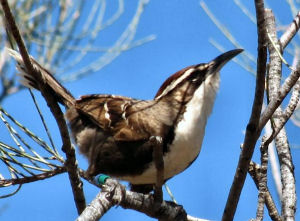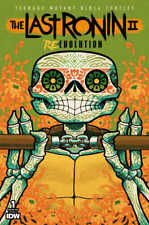
Primates that can distinguish red hues from green ones (trichromatic color vision) have been the cause of much debate among evolutionary biologists over the years. Evolutionary dogma holds that primates evolved trichromatic color vision to assist them in food foraging, by allowing them to detect red/orange food items from green leaf backgrounds. But results from recent studies have called into question the extent to which trichromacy helps in foraging and whether it does, in fact, provide a performance advantage over dichromatic primates (who lack red-green color vision).
The foraging nay-sayers have instead suggested that trichromacy evolved in primates so that they could use physical traits like red skin in socio-sexual communication, such as a male providing information to a female about his quality as a mate.
Now, however, Ohio University researchers André Fernandez and Molly R. Morris believe they have shown that trichromatic color vision was present before it functioned in communication. They contend that the ability to discriminate red from green was a pre-existing sensory bias that only later drove the evolution of red-orange pelage and skin, possibly through sexual selection.
Taken as a whole, the study provides the first statistical support for the hypothesis that a pre-existing bias promoted the evolution of red traits in primates through sexual selection. The researchers conclude that trichromacy in primates evolved in a context other than sexual communication, and this context may have been foraging performance.
Related articles:
Females Get Into Sexual Selection Game
When A Spotty Face Indicates A Healthy Partner
For Some Females, Size Does Matter
Early Humans And Chimps Much More Than Just Good Friends
Making Sense Of Our Senses
Eye Of The Beholder Redux


















Comments are closed.